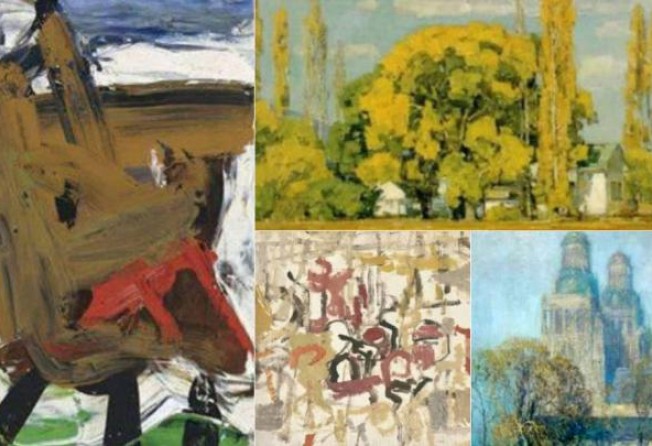Bond trader Jeffrey Gundlach offers US$1.7m for return of art collection
Bond trader offers US$1.7m for safe return of his US$10m collection, as movie moguls, top lawyers and actors wonder who will be targeted next

Even by Hollywood standards, the audacious art heist from the home of a wealthy Los Angeles money man is an intriguing whodunit.
Jeffrey Gundlach, one of the world's top bond traders, has offered a US$1.7 million bounty for the safe return of a cherished collection stolen from his Santa Monica home last week. The US$10 million haul included some of the biggest names in contemporary art: Piet Mondrian, Jasper Johns and Richard Diebenkorn.
On Monday, Gundlach took the unusual step of holding a news conference in Los Angeles to announce one of the highest rewards on record for the return of stolen art. He set aside US$1 million of the reward money for a Mondrian piece, which one art-theft expert said was the most offered for a single painting.
The biggest unanswered question: was the caper the work of sophisticated art thieves or street burglars who couldn't tell a Renoir from a Rockwell? The theft has shaken the Southern California art world, as movie moguls, pop stars, actors and star lawyers wonder whether it could happen to them.
"Everybody's talking about it; the buzz is out there," said Cheryl Perkey, a Los Angeles art consultant to wealthy collectors and celebrities. "People who have valuable collections, that's always in the back of their mind, the safety of their collections."
Gundlach gave few details about the crime, which he said he discovered after returning from a business trip to New York. In addition to the art, the thieves made off with expensive watches, rare bottles of wine and even his red 2010 Porsche Carrera.
His seven-figure reward has only added to the frenzy. It's believed to be topped only by the US$5 million that the Isabella Stewart Gardner Museum in Boston offered for the return of US$300 million worth of art stolen in a 1990 robbery. The paintings, which include three Rembrandts, are still missing and the thieves have never been caught.
Santa Monica police have released few details about the Gundlach burglary but said they were working with art-theft experts from the FBI, Interpol and Los Angeles Police Department.
Southern California is home to a number of extraordinary private art collections. Hollywood players are particularly drawn to buying art - both as a good financial investment and to flaunt their wealth, said art consultant Merry Norris. "LA is currently one of the hottest scenes in the art world," Norris said. "People who have made zillions of dollars, sometimes you can't show those stock certificates to your friends. This way you can live with it and show it to your friends."
But it isn't just new money. Los Angeles has harboured dynamic and supremely wealthy art collectors for nearly a century - and the art and money they amassed have provided the basis for every one of its top museums.
Rail magnate Henry Huntington created the Huntington Library, Art Collections, and Botanical Gardens, which opened on his San Marino estate after his death in 1927. Oil baron J. Paul Getty bequeathed the money and art to launch the Getty Museum in the city's Brentwood district and the Getty Villa ancient art museum in Malibu.
Among the leading Los Angeles collectors whose art has yet to find its way onto public walls is entertainment mogul David Geffen, who collects contemporary art. Adept at buying low and selling high, Geffen from 2004 to 2006 reportedly sold a handful of works for over US$300 million, including two Jackson Pollocks.
Retired FBI agent Robert Wittman said wealthy individuals could afford to buy expensive paintings but often did not take the precautions necessary to protect them. That was why it was much more common for valuable art to be stolen from private individuals' homes than from museums and galleries, he said.
"Museums don't lose pieces very often because they have excellent security systems," said Wittman, author of Priceless: How I Went Undercover to Rescue the World's Stolen Treasures. "When it comes to individuals, many times they don't have the sophisticated alarms and systems they need."